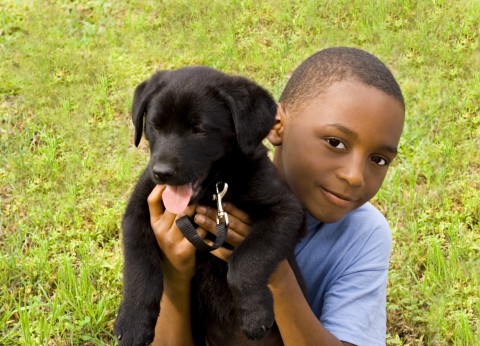
Very few people can talk without using filler words or phrases, which would sound a little unnatural, like a speech that’s been rehearsed from a script. Lexically, pause fillers are words, phrases, or sounds without meaning, despite being so commonplace in the vernacular of probably every language.
Let’s have a brief look at their function in speech before proceeding to discuss some of the most common Afrikaans filler words.

Filler words are commonplace in the vernacular of probably every language.
 Table of Contents
Table of Contents
- The Purpose of Filler Words in Afrikaans
- 11 Types of Useful Afrikaans Filler Words and How to Use Them Correctly
- Learn Afrikaans Filler Words with Ease on AfrikaansPod101.com!
1. The Purpose of Filler Words in Afrikaans
One of the most common and useful functions of filler words is to let the other person know that you haven’t finished talking. Imagine if, every time you paused to find the right word or the best way to phrase your next thought, you were interrupted because the other person thought you were done!
So yes, while filler words may have little semantic value, they definitely serve a linguistic purpose and should not be thought of as extraneous or superfluous—unless someone has developed the habit of overusing them.
The most common Afrikaans filler words resemble those in English, as you’ll see. Some of them are called “hesitation forms,” but they all have several purposes.
Here are some other common uses for conversation filler words in Afrikaans:
| Function | Example |
| They serve as speech fillers when one needs to think before commenting or gather their thoughts. | Reg, so, um…ek sal maar begin. “Right, so, um…I’ll just begin.” |
| They can also indicate feelings such as discomfort, shyness, unease, or amazement. In addition, they can even include sounds like clearing the throat, coughing, or inhaling and exhaling loudly. | Ek…uh…wil net sé…um…dat…uh…ek van jou hou. “I…uh…just want to say…um…that…uh…I like you.” |
They’re used when:
|
“And…uh…it’s important to understand this point.” So…um…daardie geld wat jy my skuld…” |
| They’re also used when a listener wants to indicate that they’re paying attention, or that they empathize/sympathize with the speaker. | Sjoe! Ja-nee ek sien wat jy bedoel. “Whew! Yes, yes, I see what you mean.” |
| They sometimes indicate that a person is lying and seeking confirmation from the listener. However, this doesn’t mean that most people who inject their speech with fillers such as “you know” or “Know what I mean?” are liars. These fillers could also just be speech habits and may be used without thought. | So…jy weet…ek het net…soos in…verby die winkel geloop toe die venster sommer van self gebreek het! “So…you know…I was just…like…walking past the shop when the window just broke by itself!” |
| They often serve as interjections to enhance the meaning of what’s being said. | Sjoe, maar haar rok was mooi! “Wow, but her dress was stunning!” |
| They’re sometimes eloquent emotional utterances unique to a language, which, at least to native speakers, simply don’t need an explanation. | Ai tog! Die trein is alweer laat! “Oh no! The train is late again!” |

Sjoe, maar haar rok was mooi! (“Wow, her dress was stunning!”)
One study showed that women use more fillers than men do. But this is only so until the age of 23, after which the gender difference disappears. The researchers also found that conscientious people tend to use more filler words than other people do.
What are the most unusual filler words in your native language? Tell us about them in the comments!
- → Want more useful phrases to impress your Afrikaans-speaking friends? See our lists of Essential Idioms That Will Make You Sound Like a Native Speaker and the Top 10 Phrases to Amaze Native Speakers.
2. 11 Types of Useful Afrikaans Filler Words and How to Use Them Correctly
In this list of Afrikaans filler words, you’ll see that some of them have distinct meanings while others are simply used as conversation filler words in Afrikaans.
#1
| Afrikaans | Literal Translation | English Equivalent |
| Uhm / Ah / Uuuuh | – | “Um” / “Ah” / “Uuuuh” |
These are basically hesitation sounds that are also found in English, and they’re used the same way as their English equivalents. They often reflect delays in response or speech and occur because the speaker:
❖ needs the listener to truly understand and/or hear what they’re saying, or ❖ is feeling uncomfortable, embarrassed, self-conscious, uncertain, or overwhelmed. | ||
| Ek dink jou horlosie is dalk…uhm…in die badkamer? Ek weet nie eintlik nie. “I think your watch is perhaps…um…in the bathroom? I don’t really know.” Ah, dankie vir die kompliment! “Ah, thanks for the compliment!” Laat ek aan ‘n ander voorbeeld dink. Uuuuhm… “Let me think of a different example. Uuuuhm…” | ||

Laat ek aan ‘n ander voorbeeld dink. Uuuuhm… (“Let me think of a different example. Uuuuhm…”)
#2
| Afrikaans | Literal Translation | English Equivalent |
| Ag | – | “Oh” / “Aw” / “Ah” |
| Similar in sound to the German “ach,” this is one of the most versatile and popular fillers in Afrikaans that native speakers pepper their speech with. It can depict different emotional states. Ag is often used with ja (“yes”) and nee (“no”), depending on the context.
❖ It’s also popularly paired with the filler tog or toggie to indicate low- to medium-level frustration. This is close to the Yiddish “Oy vey” in meaning and doesn’t have an English equivalent. ❖ It can also denote strong emotions, such as the speaker’s frustration and annoyance with something, or their despondency, disappointment, or resignation. It could also indicate the empathy or sympathy of a listener. ❖ We prolong either the “a” or the guttural “g” when we want to express that we find something utterly cute, cuddly, and/or adorable. In this sense, it’s similar to the English “Aaaaw.” | ||
| Ag, sit sommer die tasse daar neer. “Ah, just put the bags over there.”
Ag toggie! Hierdie bottel is te moeilik om oop te maak! “Bah! This bottle is too difficult to open!”
Ag, moenie jou daaraan steur nie. “Oh, don’t let it bother you.” Ag nee man, dis sommer nonsens. Lit. “Oh no, man, that’s just nonsense.” Ag, wat kan mens doen. Niks. “Ah, what can one do? Nothing.” Ag jaaaa, daar was nooit regtig twyfel oor die wedstryd se uitkoms nie. Approx: “Ah yes, the outcome of the match was never really in doubt.” Kyk hierdie gemmer katjie. Aaag, hoe oulik! “Look at this ginger kitten. Aaaw, how cute!” | ||

Ag, sit sommer die tasse daar neer. (“Ah, just put the bags over there.”)
#3
| Afrikaans | Literal Translation | English Equivalent |
| Ja-nee / Ja-ja, okay / Jaaaa | “Yes-no” / “Yes-yes, okay” / “Yeah” | “Indeed” / “I hear you” / “Right” |
These expressions are among the most common Afrikaans filler words and are usually used to indicate agreement with what is being said, but there are exceptions to the rule. Because they are fillers, their exact connotations are not definite and they can therefore be adapted to other uses, depending on how the speaker chooses to employ them. Below is a description of their most common, conventional usage.
❖ Ja-ja – This filler usually indicates unambiguous affirmation or agreement. Occasionally, it can be used to express annoyance/boredom with what is being said and might be used to move the conversation along. ❖ Okay – This is used in exactly the same way as the English word “okay”. ❖ Jaaa – This extended ja serves the same purpose as ja-nee and ja-ja, indicating that the person is listening with interest and is in agreement with the speaker. However, it can also be used to express a kind of “told you so” attitude, discernible when the speaker raises their voice on the last “a”. | ||
Ja-nee, daar is g’n twyfel nie. Hy is die skuldige. “Yes, there is no doubt. He is the culprit.” Ja-nee, jy praat die waarheid, suster! “Yes, you are speaking the truth, sister!” Ja-ja, jy’t dit reeds gesȇ. Wat nog? “Yes, yes, you’ve already said that. What else?” Okay, ek sien nou wat jy bedoel het. “Okay, I see now what you meant.” Jaaa, jy wou mos. Approx. “See, that’s what you get.” | ||

Ja-nee, jy praat die waarheid, suster! (“Yes, you are speaking the truth, sister!”)
#4
| Afrikaans | Literal Translation | English Equivalent |
| Jy weet / In elkgeval / Ek bedoel | – | “You know” / “Anyway” / “I mean” |
While these words might appear to be quite specific when it comes to their meaning, they’re really no more specific than any other conversation filler words in Afrikaans. Because of their non-specificity, they’re quite versatile; therefore, any conventions I mention are descriptive rather than prescriptive—they point to a common usage, not a rule. These particular Afrikaans filler words are often used at the beginning of a sentence, especially when one is introducing a new topic, wanting to change the topic, or wanting to expand upon something that is currently being discussed.
| ||
Introducing a new topic Jy weet, ek het nou net ‘n wonderlike idee gehad. “You know, I’ve just had a wonderful idea.” Changing the topic In elkgeval, kom ons praat liewer oor jou. “Anyway, let’s rather talk about you.” Expanding on the topic Ek bedoel, hy was reeds daar. Hoekom kon hy nie die pakkie vir my gaan haal nie? “I mean, he was already there. Why couldn’t he fetch the package for me?” | ||
#5
| Afrikaans | Literal Translation | English Equivalent |
| Rerig?! / Werklik / Sjoe / Wow | – | “Really?!” / “Truly” or “Really” / “Whew” or “Phew” / “Wow” |
These are filler words in Afrikaans that we use in two ways—either as a response to indicate reactions like amazement and disbelief or to indicate strong agreement with what is being said. They’re often used on their own to mean that we almost can’t believe what we’re hearing.
❖ Wow, as one of the conversation filler words in Afrikaans, serves the same semantic purpose as in English. They’re also used as interjections in speech to emphasize what is being said. | ||
Rerig?! Jy’t die lotto gewen? “Really?! You won the lotto?” Werklik, hy was darem baie ongeskik met my. “Truly, he was very rude towards me.” Sjoe, maar dis warm! “Phew, but it’s hot!” Wow, kyk daai groot vis! “Wow, look at that big fish!” | ||

Wow, kyk daai groot vis! (“Wow, look at that big fish!”)
#6
| Afrikaans | Literal Translation | English Equivalent |
| So / Reg | – | “So” / “Right” |
These two Afrikaans filler words usually precede a statement, and might be used prior to making an announcement (or after). For instance, one could say it while waiting for the members of a meeting to be seated. | ||
Reg…dit lyk my almal is nou hier. Kom ons begin. “Right…it looks like everyone is here. Let’s begin.” So, wat het jy vandag gedoen? “So, what did you do today?” | ||
#7
| Afrikaans | Literal Translation | English Equivalent |
| Wel / Hmm | – | “Well” / “Hmm” |
Much like their English equivalents, these Afrikaans conversation fillers often precede a statement of disagreement. | ||
Wel, ek weet nie of ek saamstem nie. “Well…I don’t know if I agree.” Hmm. Dink jy rerig hy kon so-iets doen? “Hmm…do you really think he could do something like that?” | ||

Wel, ek weet nie of ek saamstem nie. (“Well…I don’t know if I agree.”)
#8
| Afrikaans | Literal Translation | English Equivalent |
| Jis / Demmit / Vervlaks | – | “Geez” / “Dammit” / “Darn it” |
These Afrikaans exclamations are as close to swearing/cursing as you can get without actually doing so. An interesting fact is that swearing can reduce pain. That’s not to say that you should swear often, because then it actually loses its ability to reduce pain! Perhaps, using exclamations like these would be a useful compromise for those who can’t abide with swearing. | ||
Jis, ek is nou so kwaad! “Geez, I’m so angry now!” Demmit, ek kan nie hierdie bottel oopmaak nie! “Dammit, I can’t open this bottle!” Vervlaks! Ek het my masker by die huis vergeet! “Darn it! I forgot my mask at home!” | ||
#9
| Afrikaans | Literal Translation | English Equivalent |
| Né / Ja, né / Kan jy dit glo? | – | “Right” / “Agreed” / “Can you believe it?” |
These Afrikaans filler words are used to request confirmation of agreement from the listener, or to confirm agreement with the speaker. They’re often placed as tags at the beginning or end of a sentence, but can also be used on their own.
❖ Ja, né is used in response to something that the listener agrees with and is quite emphatic. ❖ Kan jy dit glo? (“Can you believe it?” / “Unbelievable!”) Despite the fact that it’s phrased as a question, it is rhetorical and used more like a statement than a question. A person might shake their head in disbelief when using this remark. | ||
A: Die water is koud, né? A: “The water is cold, right?” B: Dit is koud, ja. B: “It is cold, yes.” A: Ai, die land se administrasie is in flenters. A: “Oi, our country’s administration is in shambles.” B: Ja, né. B: “Agreed.” A: Het jy gehoor van daardie man wat gister deur die kinderbende beroof is? A: “Did you hear about that man who was mugged by a gang of children yesterday?” B: Ja, ek het. Kan jy dit glo? B: “Yes, I did. Can you believe it?” | ||
#10
| Afrikaans | Literal Translation | English Equivalent |
| Ag tog / Ai tog | – | “Oh dear” / “Oh shame” / “Oh my goodness” |
Of all the expressions in this list of Afrikaans filler words, I think the function of expressions using tog is the most difficult to pin down. The word tog has so many semantic variants, it would be pointless to try and list them all here. Fortunately, if you would like to investigate this rather unique Afrikaans filler word further, there are resources out there that can help.
| ||
Ag tog, ek het vergeet om die kliënt te bel! +”Oh dear, I forgot to call the client!” Ai tog, daardie buurman se hond blaf al weer die hele dag lank! “Oh my goodness, that neighbor’s dog has been barking all day again!” Two of the three interjections I’m going to discuss next also contain –tog. However, they’re grouped together because of their similarity in meaning. | ||

Ag tog, ek het vergeet om die kliënt te bel! (“Oh dear, I forgot to call the client!”)
#11
| Afrikaans | Literal Translation | English Equivalent |
| Foeitog / Shame / Siestog | – | “Oh dear” / “Oh shame” / “Oh my goodness” |
These three words mean more or less the same thing and are used interchangeably. Ag is often added, especially when the object under discussion is particularly small and/or vulnerable.
❖ The interjection “shame” is used similarly to British English, such as, “Oh (what a) shame”, which expresses a mix of pity and sympathy. It also denotes affection. | ||
Foeitog, die arme kind het nog nie ontbyt gehad nie! “Oh shame, the poor child hasn’t had breakfast yet!” Foeitog, gee die arme man nog ‘n kans, asseblief! “For pity’s sake, give the poor man another chance, please!” Ag siestog! Is die hondjie nie te oulik nie vir woorde nie?! “Oh my goodness! Isn’t the puppy too cute for words?!” Shame, hy sukkel om sy gesondheid te herwin na hy COVID gehad het. Approx. “Poor man, he’s battling to regain his health after contracting COVID.” | ||

Ag siestog! Is die hondjie nie te oulik nie vir woorde nie?! (“Oh goodness! Isn’t the puppy too cute for words?!”)
I’m sure you’ll find these common Afrikaans filler words very useful. They’ll help you to hold a conversation in Afrikaans and make your speech sound a lot more natural!
3. Learn Afrikaans Filler Words with Ease on AfrikaansPod101.com!
Which of these Afrikaans filler words do you think you’re most likely to use? Are any of them similar to filler words in your own language?
At AfrikaansPod101.com, we can help you understand Afrikaans easily with our fun and practical learning materials, such as recorded videos and free vocabulary lists. With our help, you’ll be able to use the phrases correctly and speak like a native in no time.
Also, decipher Afrikaans phrases yourself with the multiple tools we make available to you upon subscription, such as the Afrikaans Key Phrase List and the Afrikaans Core 100 Word List. And make sure to keep your Afrikaans online dictionary closeby for easy translation!
If Afrikaans vernacular is important to you, then take a look at the following blog posts:
- The Best Afrikaans Internet Slang and How to Use it!
- How to Say “Hello” in Afrikaans Like a Native Speaker!
- How to Say ‘Thank You’ in Afrikaans
Still hesitating? Don’t! Subscribe now. You’ll be very happy you did!
About the author: Christa Davel is a bilingual (Afrikaans and English) freelance writer and journalist, and is currently based in Cape Town, South Africa. She’s been writing for InnovativeLanguage.com since 2017.










